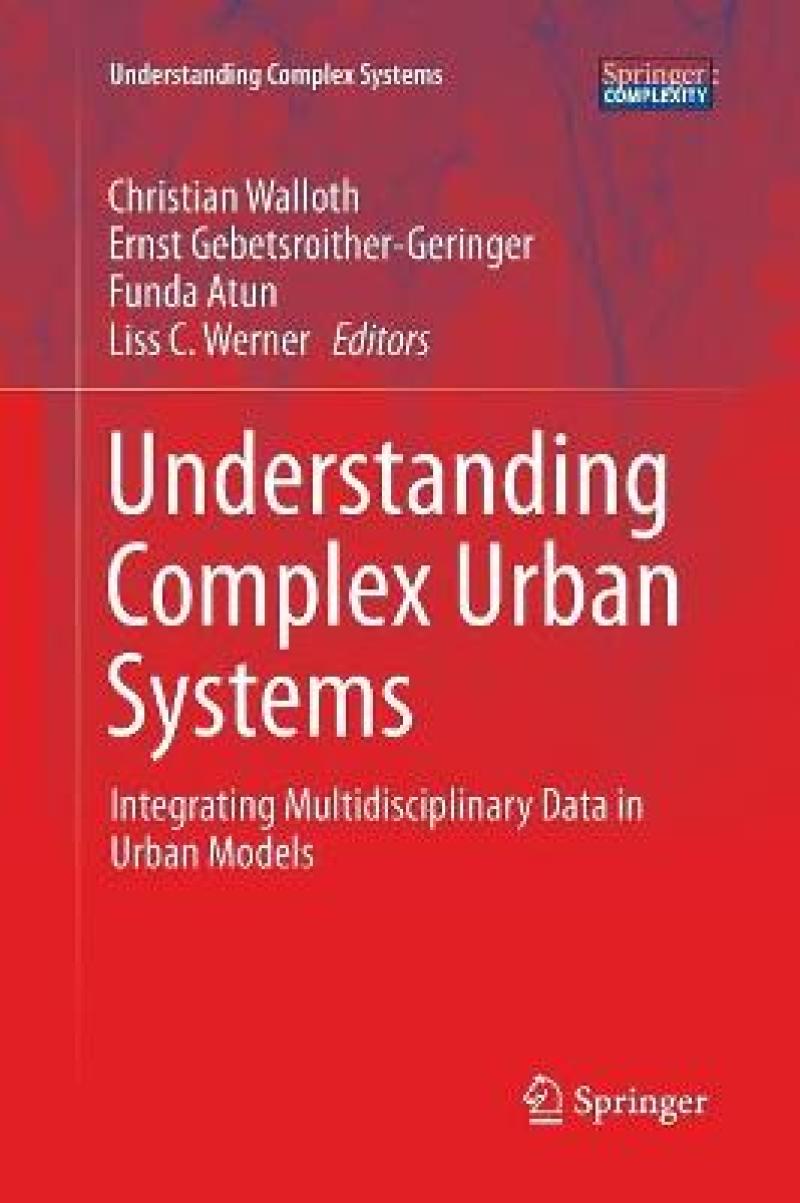This book is devoted to the modeling and understanding
of complex urban systems. This second volume of Understanding Complex Urban
Systems focuses on the challenges of the modeling tools, concerning, e.g., the
quality and quantity of data and the selection of an appropriate modeling
approach. It is meant to support urban decision-makers—including municipal
politicians, spatial planners, and citizen groups—in choosing an appropriate
modeling approach for their particular modeling requirements. The contributors
to this volume are from different disciplines, but all share the same goal:
optimizing the representation of complex urban systems. They present and
discuss a variety of approaches for dealing with data-availability problems and
finding appropriate modeling approaches—and not only in terms of computer
modeling.
The selection of articles featured in this volume reflect
a broad variety of new and established modeling approaches such as:
- An argument for using Big Data methods in
conjunction with Agent-based Modeling;
- The introduction of a participatory approach
involving citizens, in order to utilize an Agent-based Modeling approach to
simulate urban-growth scenarios;
- A presentation of semantic modeling to enable a
flexible application of modeling methods and a flexible exchange of data;
- An article about a nested-systems approach to
analyzing a city’s interdependent subsystems (according to these subsystems’
different velocities of change);
- An article about methods that use Luhmann’s system
theory to characterize cities as systems that are composed of flows;
- An article that demonstrates how the Sen-Nussbaum
Capabilities Approach can be used in urban systems to measure household well-being
shifts that occur in response to the resettlement of urban households;
- A final article that illustrates how Adaptive Cycles
of Complex Adaptive Systems, as well as innovation, can be applied to gain a
better understanding of cities and to promote more resilient and more
sustainable urban futures.
Les mer
Introduction.- Combining
Agent-Based Modeling with Big Data Methods to Support.- Urban Development
Simulator: How Can Participatory Data Gathering Support Modeling of Complex
Urban Systems.- Bypassing Data Unavailability
in Urban Systems Modeling.- Big Data? No Data. How to Pro-actively Deal
With Unexpected Change in Cities Where (Big) Data is Not
Available.- Conceptualizing the Urban System as a System of Flows.- Operationalizing
the Capabilities Approach for Modeling Household Welfare Shifts in Urban
Systems: A Special Focus on the Transportation Outcomes of Urban
Resettlement.- Interventions in Complex Urban Systems: How to Enable
Modeling to Account for Disruptive Innovation.
Les mer
This book is devoted to the modeling and understanding
of complex urban systems. This second volume of Understanding Complex Urban
Systems focuses on the challenges of the modeling tools, concerning, e.g., the
quality and quantity of data and the selection of an appropriate modeling
approach. It is meant to support urban decision-makers—including municipal
politicians, spatial planners, and citizen groups—in choosing an appropriate
modeling approach for their particular modeling requirements. The contributors
to this volume are from different disciplines, but all share the same goal:
optimizing the representation of complex urban systems. They present and
discuss a variety of approaches for dealing with data-availability problems and
finding appropriate modeling approaches—and not only in terms of computer
modeling.
The selection of articles featured in this volume reflect
a broad variety of new and established modeling approaches such as:
- An argument for using Big Data methods in
conjunction with Agent-based Modeling;
- The introduction of a participatory approach
involving citizens, in order to utilize an Agent-based Modeling approach to
simulate urban-growth scenarios;
- A presentation of semantic modeling to enable a
flexible application of modeling methods and a flexible exchange of data;
- An article about a nested-systems approach to
analyzing a city’s interdependent subsystems (according to these subsystems’
different velocities of change);
- An article about methods that use Luhmann’s system
theory to characterize cities as systems that are composed of flows;
- An article that demonstrates how the Sen-Nussbaum
Capabilities Approach can be used in urban systems to measure household well-being
shifts that occur in response to the resettlement of urban households;
- A final article that illustrates how Adaptive Cycles
of Complex Adaptive Systems, as well as innovation, can be applied to gain a
better understanding of cities and to promote more resilient and more
sustainable urban futures.
Les mer
Introduction and recent research on complex urban systems Devoted to the Integration of Multidisciplinary Data in Urban Models The approaches presented in this book range from crowd data and big data, to social media geographic information and semantic modeling Includes supplementary material: sn.pub/extras
Les mer
Produktdetaljer
ISBN
9783319807409
Publisert
2018-05-04
Utgiver
Vendor
Springer International Publishing AG
Høyde
235 mm
Bredde
155 mm
Aldersnivå
Research, P, 06
Språk
Product language
Engelsk
Format
Product format
Heftet
